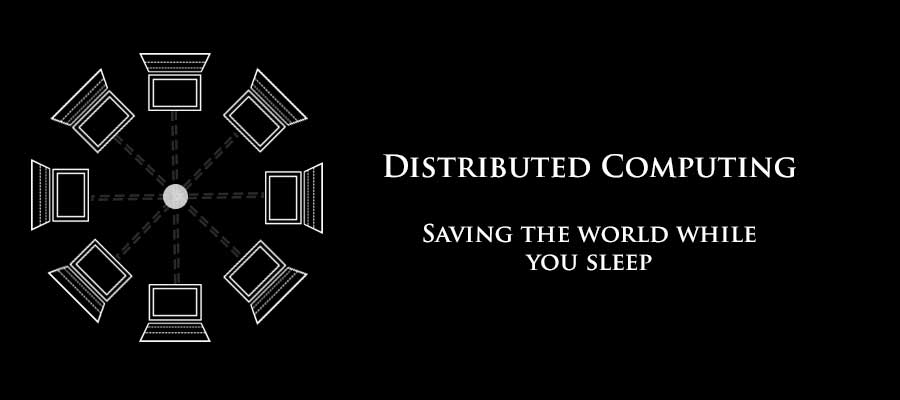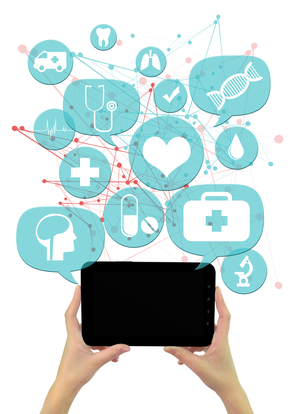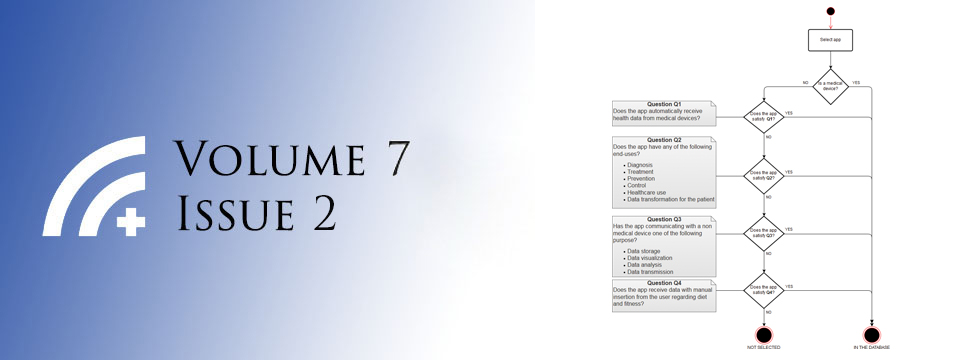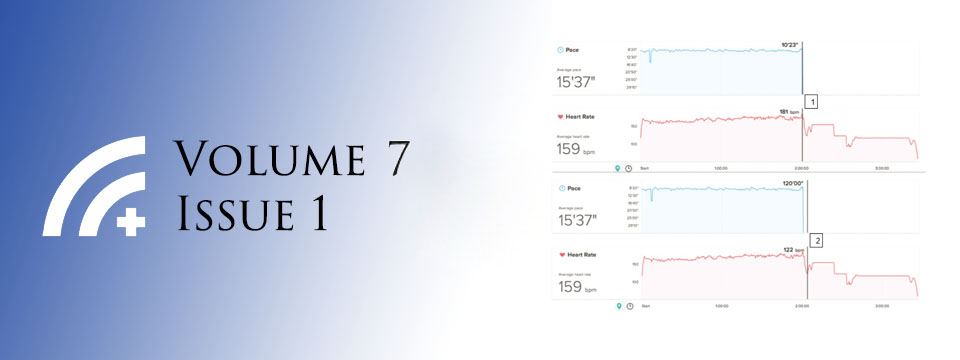Posted on Dec 26, 2013 in News |
Mobile devices have become ubiquitous in modern American society. Although some psychologists worry that too much screen time can be bad for health, mobile devices can actually be a force used for good in the realm of healthy living.
Popular Self-monitoring Tools
According to a survey of U.S. consumers by Royal Philips Electronics, one in 10 Americans believe that Web-based health information has prevented them from dying or becoming severely incapacitated. For example, the WebMD app for Android has been downloaded more than 5 million times, suggesting that consumers rely on mobile devices to provide important health information. Similarly, patients with back pain may visit sites such as lsinewsroom.com on their smartphones to read about the latest research on spine problems to identify potential treatments. From simply visiting a mobile site to downloading apps, health is showing up on mobile phones.
An increasingly popular sector of mobile health tools are self-monitoring programs. A 2012 report by Pew Research indicates that 60 percent of U.S. adults track their dietary habits, exercise routines or weight. Furthermore, 33 percent track health indicators such as headaches, blood sugar levels, blood pressure, or sleep patterns. Although much of this tracking is done informally, use of apps or self-tracking monitors is increasingly common.
Benefits of Mobile Health Tools
Fostering a sense of efficacy. One of the key benefits of mobile health tools is fostering a sense of patient efficacy. Research has demonstrated that improving self-efficacy translates into changes in behavior and improved treatment outcomes, according to Euromedinfo.com. For example, a patient who monitors his blood pressure each day may notice spikes that coincide with major work deadlines. As a result, he may feel empowered to advocate for a more balanced workload or use other strategies to manage his stress during these times.
Increasing accuracy. Patient self-report is notoriously unreliable, making it a contributing factor to medical errors or misjudgments. For example, MedCoach is a popular app used to remind patients to take their medications. Improving medication compliance decreases risk of adverse outcomes and increases patient well-being.
Providing increased information to medical professionals. For medical professionals, more data is useful when helping a patient make informed health care decisions. Using devices that monitor vitals, track changes in mood or weight, or check other symptoms provides physicians with a wealth of clinically useful information. For example, use of a symptom checking device may help a psychiatrist notice that after beginning a new antidepressant medication, a patient experienced significant weight gain and an uptick in anxiety symptoms. Rather than relying on a patient’s retrospective report or “hunch” about a medication, the physician can make an informed decision about adjusting the dosage or medication class.
Drawbacks of Relying on Mobile Devices for Health
Although consumers are increasingly willing to try mobile devices to monitor health symptoms, these products have some drawbacks. One of the key areas of concern is that patients may become over-reliant on medical devices and avoid seeking treatment. By consulting symptom checker apps or other online medical advice, patients may overlook key patterns or symptoms that are indicators of serious health problems. The Philips survey suggested that 25 percent of respondents trust devices as much as a doctor, while 27 percent use home tools in lieu of consulting a physician.
To fully take advantage of the benefits of mobile health tools, health care professionals may advocate for the use of tracking devices in conjunction with appropriate visits to a medical facility. This combines the advantage of patient self-monitoring data with a physician’s expert knowledge, promoting the most advantageous health outcomes.
Links
Web-based health information – http://www.newscenter.philips.com/us_en/standard/news/press/2012/20121212_Philips_Survey_Health_Info_Tech.wpd#.Ur2dePRDvrf
lsinewsroom.com – http://www.lsinewsroom.com/
Pew Research – http://pewinternet.org/Reports/2013/Tracking-for-Health.aspx
Posted on Dec 17, 2013 in News |

Computer time has long been considered an essential resource in
conducting in silico simulations, either replacing or complementing
traditional experiments. So what’s a researcher to do when
supercomputer time costs millions of dollars and the supercomputers
themselves cost billions? Sadly, not everybody has a spare computing behemoth
lying around in their back yard to loan out to starving researchers.
In recent years, thanks to the power of the Internet, the idea of
harvesting unused CPU cycles from volunteer computers has become not
just a possibility, but a practicality. Most computers, whether at
home or at work, are not utilized to their full capacity. Web browsing
and reading email hardly count as taxing duties for today’s state of
the art computers with processor power several orders of magnitude
greater than what was available 30 years ago.
Distributed computing has been around since 1997, when an early
attempt harnessed volunteer computers to crack an encryption key
similar to trying every concievable combination on a number lock,
by by trying every possible combination. Ordinarily, this would be impossible for a single computer to attempt within a human lifetime, but with the huge amount of
processing time available, the search was hastened by several orders of magnitude, making it a feasible prospect.
Today, this approach has been applied to many diverse problems in
different scientific fields, ranging from mathematics, astronomy,
physics, and of course, life sciences. Two examples include the IBM
World Community Grid, involved in numerous projects including research
into a potential cure for cancer and anti-AIDS drugs, and the
Rosetta@Home project, analyzing protein structures.
These projects are managed by front-end software called BOINC, the
Berkeley Open Infrastructure for Networked Computing. Problems too big
for a single computer to tackle, such as searching vast amounts of
data for cancer markers or biologically active molecules, are divided
up into manageable pieces and automatically sent out to the clients
participating in the project. Results, once processed, are
automatically sent back to the server for aggregation. To give one an
idea of how much processor time is available, the World Community Grid
tracks a statistic called Run Time Per Calendar Day. This is
equivalent to the number of days of running a single computer,
achieved in 24 hours of real time. One project is averaging an incredible 63 years
worth of computer time contributed to the project – every 24 hours!
Today’s Tablet – How it Stacks Up
Simultaneously, since 1997, the mobile phone has evolved from a
straightforward voice communication device, to a powerful handheld
computer in its own right. Mobile CPUs have grown from primitive
integrated circuits to full blown multi-core CPUs, such as the NVidia
Tegra 3-30L found in the Google Nexus 7 (2012) Android tablet. In
2012, BOINC also started including support for Android-based mobile
clients, in addition to its traditional usage of desktop and laptop
CPUs, as mobile clients finally gained enough processor power, storage
and RAM to tackle compute-intensive tasks.
While cross-platform comparisons are often difficult, due to a myriad
of factors such as different architectures, programming languages,
operating systems and so on, MIPS (Millions of Instructions Per
Second) serves as a very rough benchmark to provide a relative
comparison between platforms and generations.
Relative performance
NVidia Tegra 3-30L CPU in a Nexus 7 2012 tablet, 5W power consumption
Approximately 10500 MIPS
MacBook Air 2013
Intel core i5-4250U, 15W power consumption (CPU alone)
~47000 MIPS
Desktop with quad-core Intel i5-4770K, 84W power consumption
125000 MIPS
A rough estimate is that a Nexus 7 (2012 edition) Android tablet would
provide nearly a quarter of the CPU power available to a contemporary
MacBook Air (2013) user. For a portable, handheld device consuming a
mere 5 watts, capable of running all day on a much smaller battery,
this is quite an achievement. While still remarkably power efficient
(indeed it achieves higher MIPS per watt), the Macbook needs to
consume at least 3 times the power to deliver the amount of computing
power it does.
Comparisons with a desktop CPU make the Android appear even more
efficient. While the Intel i5-4770K quad-core CPU is nearly 11 times
more powerful, it also consumes 17 times more power in order to
provide this performance, and certainly is not designed for
portability.
Consider this, in 1999 an Intel Pentium III (600Mhz) produced
approximately 2K MIPS. Even at that time, it was suitable, indeed
highly regarded for early distributed computing efforts.
No Free Lunch
Of course, there’s no such thing as a free lunch. Running
CPU-intensive applications generates heat and drains power, which is a
concern especially for portable users. To this end, the BOINC client
has been intelilgently engineered to start running only when the
Android device is charged >90%, and only communicates with its servers
on WiFi. While this seems to limit the use of the client, a tradeoff
is made between inconveniencing the volunteer user donating their CPU
time, and the time available for processing.
As it is, this combination of events happens when you leave your
tablet or phone overnight to recharge. Simply install the BOINC client
from the Google Play store, select a project you’d like to participate
in, adjust the parameters (if necessary) and leave your mobile device
overnight to charge. Once fully charged, it will start processing, and
stop when you take it off the charger the next day.
Unfortunately, no client for IOS devices is available today, but
hopefully there may be some day in the future.
Saving the world while you sleep? Yup, it’s possible. Every computer
counts. Try it today.
Further Reading
If you would like to read more, please see the BOINC Android FAQ.
http://boinc.berkeley.edu/wiki/Android_FAQ
The client can also be downloaded from the Google Play store here:
https://play.google.com/store/apps/details?id=edu.berkeley.boinc&hl=en
News Article by Kevin Lam
Posted on Dec 12, 2013 in Conference |
Jaesung Heo, MD1, Mison Chun, MD, PhD1, Ki Young Lee, PhD2, Young-Taek Oh, MD, PhD1, O kyu Noh, MD, PhD1, Rae Woong Park, MD, PhD2,3,4
1Department of Radiation Oncology, Ajou University School of Medicine, Republic of Korea; 2Department of BiomedicalInformatics, Ajou University School of Medicine, Republic of Korea; 3Center for Clinical Epidemiology and Biostatistics, and Department of Biostatistics & Epidemiology, Perelman School of Medicine at the University of Pennsylvania, Philadelphia, Pennsylvania, United States of America; 4Center for Pharmacoepidemiololgy Research and Training, Perelman School of Medicine at the University of Pennsylvania, Philadelphia, Pennsylvania, United States of America
Journal MTM 2:4S:19, 2013
DOI: 10.7309/jmtm.2.4S.16
Abstract
Background Breast cancer patients who founded in early stage have a good prognosis. Females who practice breast self-examination (BSE) are usually diagnosed at an earlier stage than those who do not.
Aims The purpose of this study was to develop a smart-phone application to encourage BSE, and to evaluate the effects of mobile intervention in terms of improving breast self-examination behavior.
Methods A developed smart-phone application had several functions including a BSE date alarm, a reminder to encourage mother and daughter to practice BSE together, BSE record, and educational video clips. Females aged 19 and over were enrolled and two series of questionnaires were carried out (before and after using the application) between July and September 2012.
Results Forty five subjects (age 29.5 ± 5.9 years) were enrolled in the study. Of 45 participants, 28 (62.2%) had practiced BSE, and only one of these was carried out at the appropriate time, based on the results of the baseline survey. After using the application, the number of participants practicing BSE increased from 28 to 32 (62.2% to 71.1%; p = 0.503). In subgroup analysis (age <30 years), the number of participants using BSE increased from 8 to 18 (36.4% to 81.8%; p = 0.002), and the number of those using it at the appropriate time improved from 1 to 15 (2.2% to 33.3%, p <0.001).
Conclusions In female younger than 30 years, the developed smart-phone application increased BSE practice. To confirm the long-term effect of the mobile application and overcome difference in smart phone usage, further studies must be carried out.
Posted on Dec 6, 2013 in Featured |
The Editorial Board at the Journal of Mobile Technology in Medicine is proud to present Volume 2, Issue 4S, published in December 2013. As media partners of the mHealth Summit 2013, Journal MTM is proud to present a special edition of the Journal presenting all the conference abstracts. We look forward to your article submissions.
Volume 2, Issue 4S Contents
Abstracts
Feasibility of Text Messaging to Improve Oral Anti-Cancer Adherence in older Cancer Patients
Spoelstra, S., Given, B., Sikorskii, A., Coursaris, C., Majumder, A., Schueller, M., Ridenour, K., Wormser, M., Given, C.W.
Improving recognition of severe illness and patient pathways in primary health services using mHealth technology in urban Blantyre, Malawi
O’Byrne, T., Nyirenda, D., Perrin, R., Marshall, S., Geldof, M., Bar-Zeev, S., Lufesi, N., Nyirenda, E., Dube, Q., Bar-Zeev, N., Glennie, L., Molyneux, E., Heyderman, R., Desmond, N.
WelTel LTBI: A Randomized Controlled Trial Protocol of a Text-Messaging Intervention to Improve Patient Adherence to Treatment for Latent Tuberculosis Infection
van der Kop, M. L., Smillie, K., Memetovic, J., Elwood, K., Hajek, J., Thabane, L., Marra, F., Alasaly, K., Taylor, D., Lester, R.
Use of the WelTel mobile health intervention at a tuberculosis clinic in British Columbia: a pilot study
van der Kop, M. L., Smillie, K., Alasaly, K., Van Borek, N., Coleman, J., Memetovic, J., Taylor, D., Lester, R., Marra, F.
WelTel BC1: A Qualitative Investigation Adapting the WelTel Text Messaging Intervention to Improve HIV Care in British Columbia, Canada
Smillie, K., Van Borek, N., Friesen, K., Abaki, J., Graham, R., Maan, E. J., Maginley, J., Pick, N., Murray, M.C.M., van der Kop, M.L., Lester, R.T. , the WelTel BC1 Study Team
TEXT TO MOVE – Randomized Controlled Trial of Personalized Text Messaging to Improve Physical Activity in a Diverse Patient Population with Type 2 Diabetes Mellitus
Agboola, S., Lopez, L., Searl, M., O’Keefe, S., Kvedar, J., Jethwani, K.
Monitoring MAMA: Gauging the Impact of MAMA South Africa
Coleman, J.
MobileCARE- Innovative Approaches for Combat Trauma Education and Documentation
Schulman, C.I.
Air Aware: A smartphone app to increase awareness of environmental factors triggered for symptoms of breathing-related illnesses
Bass, M.
Experience with mobile technology among patients with tuberculosis in San Diego, California and Tijuana, Mexico
Collins, K., Muñoz, F., Moser, K., Cerecer-Callu, P., Raab, F., Flick, A., Rios, P., Zúñiga, ML., Cuevas-Mota, J., Burgos, JL., Rodwell, T., Rangel, MG., Patrick, K., Garfein, RS.
Engaging Individuals to Promote Diabetes Risk Awareness with txt4health: A Program Evaluation of Beacon Community txt4health Pilots in Southeast Michigan and Greater Cincinnati
Buis, L., Hirzel, L., Turske, S., Des Jardins, T., Yarandi, H., Bondurant, P.
Use of an Automated Telephone Response System for a Women’s Lifestyle Physical Activity Program
Buchholz, S.W., Wilbur, J., Ingram, D., Manning, A., Fogg, L.
A comparison of two text message-based intervention studies for health promotion in Cape Town, South Africa: The lessons learnt
Lau, Y. K., Brittain, K., Hacking, D., Cassidy, A., Haricharan, H.J., Heap, M.
Virtual Validity: mHealth Simulation Games, Diagnostic Indicators, and Behavior Change
Godoy, C.G., Miller, L.C., Corsbie-Massay, C., Christensen, J.L., Appleby, P.R., Read, S.J., Si, M.
There’s an App for That! Promoting Antiretroviral Medication Adherence in Rural Georgia: The Music for Health Project
Holstad, M., Ofotokun, I., Farber, E., Waldrop-Valverde, D., Logwood, S., Hira, R., Jobe, D., Adewuyi, M., Bauman, M., Pope, H., Zuniga, J.
A Feasibility Study of Smart-Phone Application on Breast Self-Examination in Korea
Heo, J., Chun, M., Lee, K.Y., Oh, Y.-T., Noh, O., Park, R.W.
We look forward to hearing from readers in the comments section, and encourage authors to submit research to be considered for publication in this peer-reviewed medical journal.
Yours Sincerely,
Editorial Board
Journal of Mobile Technology in Medicine
Posted on Dec 5, 2013 in Conference |
Sandra Spoelstra,PhD, RN1, Barbara Given,PhD, RN, FAAN1, Alla Sikorskii,PhD3,
Constantinos Coursaris,PhD4, Atreyee Majumder,MD3, Monica Schueller,BA1,
Kimberly Ridenour,Nurse Scholar1, Michele Wormser,Nurse Scholar1, Charles W. Given,PhD2
1College of Nursing; 2Family Medicine; 3Department of Probability and Statistics; 4Department of Communication at
Michigan State University, East Lansing, MI
Journal MTM 2:4S:1, 2013
DOI: 10.7309/jmtm.2.4S.1
Abstract
Background More than 50 oral chemotherapy agents in pill form are on the market, with projections that in 3 years, 25% of cancer treatment will be in pill form. For oral agents to achieve a therapeutically effective level for cancer treatment, patients must strictly adhere to the regimen. However, adherence is often less than 80%, which may be inadequate for treating the cancer. There are more than 285 million wireless subscribers in the US with an estimated 67.5% of adults owning cell phones and 98% of those phones having text messaging capability. A recent review of 12 trials on interventions for disease prevention or management found that text messaging improved health behaviors.
Purpose There are multiple mobile applications and smart phone products to prompt medication adherence, however, few have examined if these prompts improve medication adherence. Adherence is critical among cancer patients who are older and less likely to text message. The cancer medications can be costly, as much as $800 per pill, and only effective if taken as prescribed. Adherence is complicated by complexity of the dosing and the duration of the prescriptions. Therefore, the purpose of this study is to test the feasibility, usability, and satisfaction with text messages to improve symptoms from side effects of treatment and adherence to oral chemotherapy agents.
Methods A 10-week, 2-group, prospective trial will enroll 76 patients from cancer centers to examine a 3-week text message intervention to promote oral agent adherence and management of symptoms from side effects of treatment. Descriptive statistics, generalized linear modeling, and generalized estimating equations will be used for analysis.
Results Enrollment is underway and preliminary findings on characteristics, feasibility of text message intervention and its influence on adherence rates will be presented.
Conclusion Text messages can easily be tailored to a specific oral agent regimen, making this intervention usable for simple or more complex dosing. Further, delivering the text messages on cell phones makes this intervention readily accessible. Likewise, it is the first study to enroll a cohort of patients who are newly prescribed oral agents. Past research has demonstrated that adherence levels begin to decline 2 months after the initiation of therapy. Therefore, this research could inform initiation of care, where patterns of behavior could be established and carried out through the entire treatment regimen. This type of novel intervention also has the potential to transform and impact other ill populations that require adherence to a medication regimen.
Posted on Dec 5, 2013 in Conference |
Yan Lau 1, Kirsty Brittain 1, Damian Hacking 1, Avital Cassidy 1, Hanne Haricharan 1, Marion Heap 1
1Health and Human Rights Programme, School of Public Health and Family Medicine, University of Cape Town, Anzio Road, Observatory 7925, South Africa
Journal MTM 2:4S:16, 2013
DOI: 10.7309/jmtm.2.4S.13
Abstract
According to the World Bank, there are 128 mobile subscriptions per 100 people in South Africa as of 2011. Cellphones are therefore viewed as having considerable potential for health promotion. However, evaluations of interventions and evidence of effectiveness are still limited in developing countries. Two separate trilingual (isiXhosa, Afrikaans and English) short-message-service (SMS) interventions that took place from 2012 to 2013 in Cape Town are evaluated.
The SMS campaigns aimed to increase health knowledge by disseminating health information via SMS. Specifically, each study involved sending SMSes to participants to provide them with information regarding how to control hypertension and how to be healthy during pregnancy, respectively. The hypertension campaign was conducted with hypertensive patients at a Community Health Centre, while the antenatal campaign was with pregnant women attending a Midwife Obstetric Unit. Facility staff guided the preparation and checked the health promotion content of both campaigns.
There were 223 and 206 participants at baseline in the hypertension and antenatal campaigns respectively. Both studies used mixed research methods of a randomised control trial followed by a focus group. Participants were randomised either to be sent SMSes (experiment group) or not (control group). Intervention in the hypertension campaign involved sending 5 SMSes per week for 16 weeks. The pattern of dissemination was different in the antenatal campaign: SMSes were staggered according to the week of pregnancy at the time of recruitment into the study. The total number of SMSes sent to all those in the experiment group was 101.
34.53% and 46.60% of the participants were lost to follow-up (LTFU) in the hypertension and antenatal campaign respectively. There was no differential LTFU in either study. At the end of the antenatal campaign, there were no significant differences in the level of knowledge (assessed by nine questions) between the experiment and the control group (all p > 0.05). Similar results emerged in the hypertension campaign. Despite no significant improvements in knowledge, both campaigns’ participants (experiment group) reported high levels of behavioural change. Participants in both focus groups remarked that the SMSes acted as reminders or “light bulbs”.
SMSes appear to be more effective at improving motivation than increasing knowledge, although objective measures to verify behavioural change could not be obtained in either campaign. Further research is needed to investigate how health knowledge can be improved via mHealth interventions, particularly in populations of low socioeconomic status where high rates of LTFU are a reality.












